Von Mäusen und Menschen
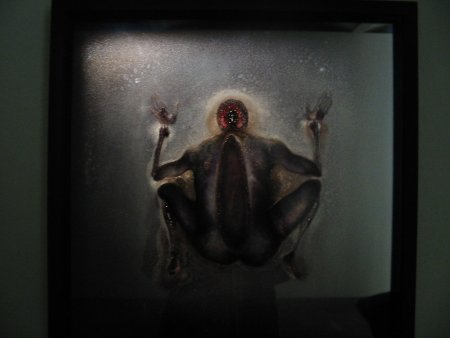
Roberto Cuoghi, Untitled 2004
Last monday the 4. Berlin Biennale for Contemporary Art under the title: “Von Mäusen und Menschen” (Of Mice and Men) closed its doors. The biennale is one of Berlins important regular modern art events.
From the press kit for the exhibition:
“Of Mice and Men” looks at life as a series of traumas and at art as an enigma that capture moments of disorientation and states of uncertainty and fragility. Anxiety and paranoia, a
impenetrable obscurity and a looming sense of suspension are some of the recurring atmospheres in the show.
This is a rather long post. I originally intended to break up in pieces and to blog it over time, but after writing it I decided to keep it as it is.
The biennale was located along Berlins Auguststrasse – a street which is located in the former jewish central quarter “Scheunenviertel”, which is in the center of Berlin. The street is next to the old New Synagogue and the Tacheles. Main buildings of the Biennale were the “Kunstwerke” (building below with flags) and the former jewish girls school just opposite of the Kunstwerke.
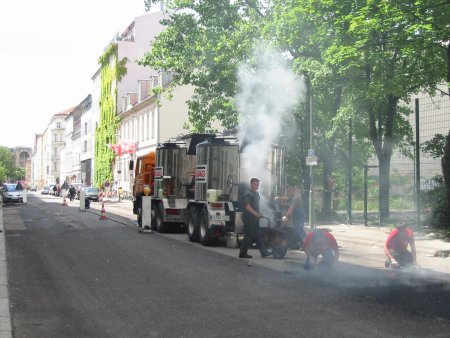
However the curators of the biennale Maurizio Cattelan, Massimiliano Gioni and Ali Subotnick (who are an artist, a curator and an editor/writer/curator) included the whole street with private appartments, a dance hall etc. into their Biennale location. Alltogether there were 12 exhibition venues along Auguststrasse.
From the press kit:
These venues were not selected in order to comment on gentrification or socio-economic changes in the area; they are sites that everyone can connect with, almost on a visceral level, and the entire street can be seen as a microcosm of an entire society, or a fictional setting for a novel. “Of Mice and Men” then can be read as a journey across time and space, in which viewers are invited to experience art and the contexts in which works are presented, as if opening a series of time capsules. A serious effort has been made to preserve the spaces exactly as they were found.
As I said, the “Scheunenviertel” is located in the very center of Berlin in a district called “Mitte” (means: center). The gentrification of “Mitte” currently manifests itself in a mixture of on the one hand expensive housing, shops and galleries and on the other hand old ruins, still some more experimental shops and galleries, former GDR Plattenbau (buildings made with precast concrete slabs), traditional Berlin pubs etc. The Auguststrasse is meanwhile quite packed with galleries and starts to adress rather rich clients. Likewise the entrance fee of the biennale of 12 Euros was rather pricey – in a city with an unemployment rate of 21,7 %.
By the way the above street workers, who worked there all day, left a work which made me think for quite a while:
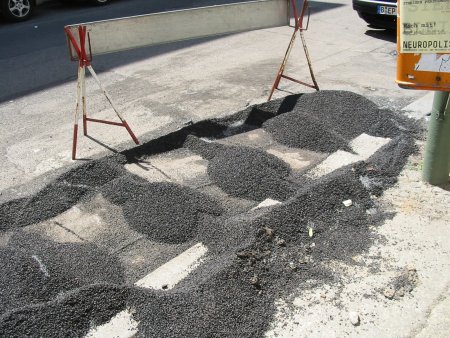 .
.
At the end of my tour the tar-pattern was destroyed:
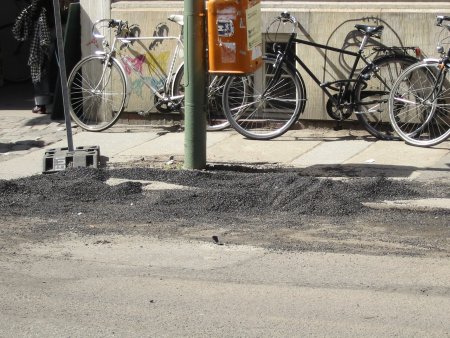
…and I am still not sure, why they generated this tar-pattern at all.
However despite all ritzy establishment – Berlins street art is still prevalent at this place:
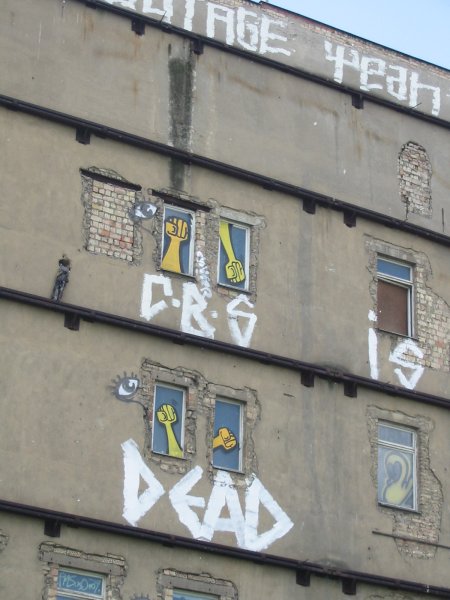
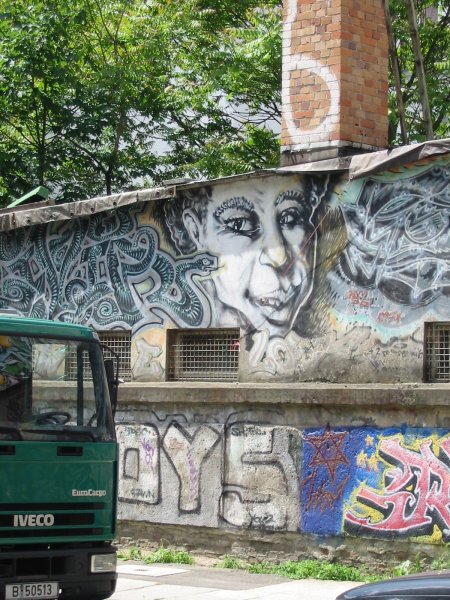
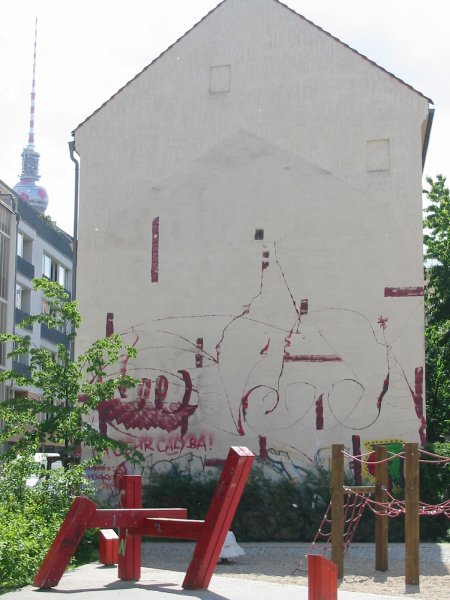
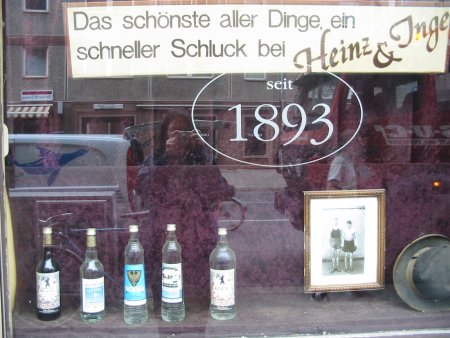
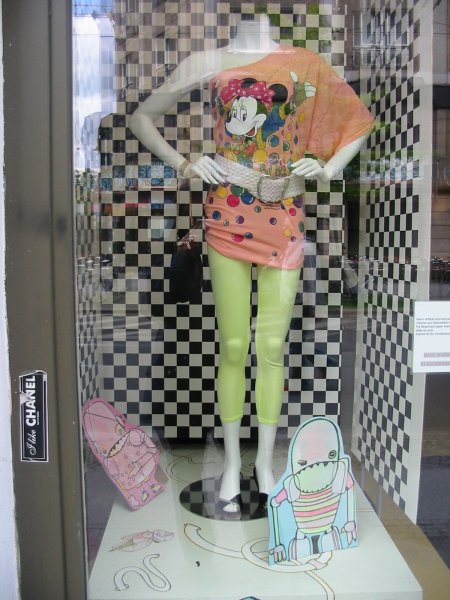
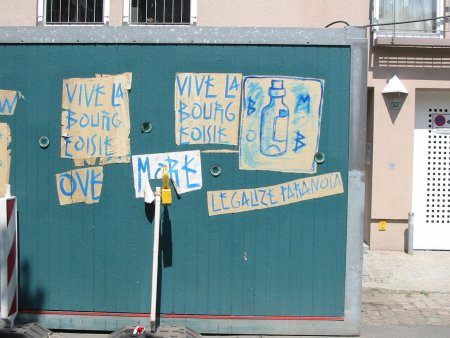
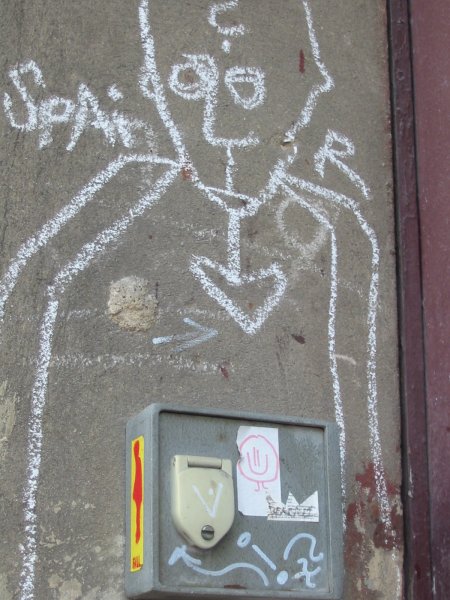
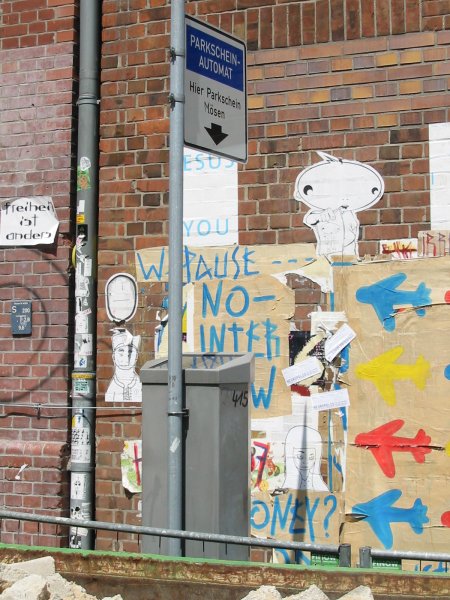
(I am not going to translate the (modified) sign on the parking ticket vending machine!)
The aesthetics of the outside (and partially of the former “inside”) were partially included in the “inside of the Biennale”. Inside and outside, observed, observer, object and environment were evidently entangled.
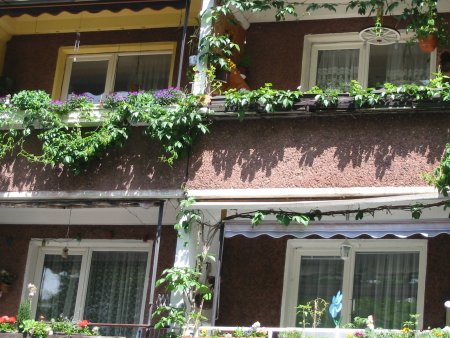
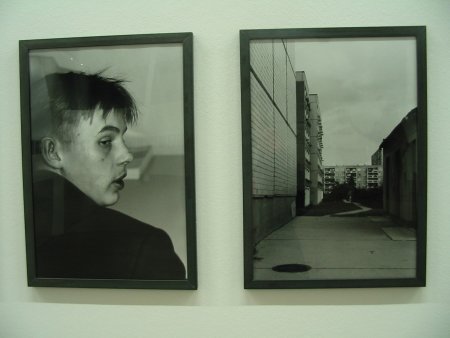
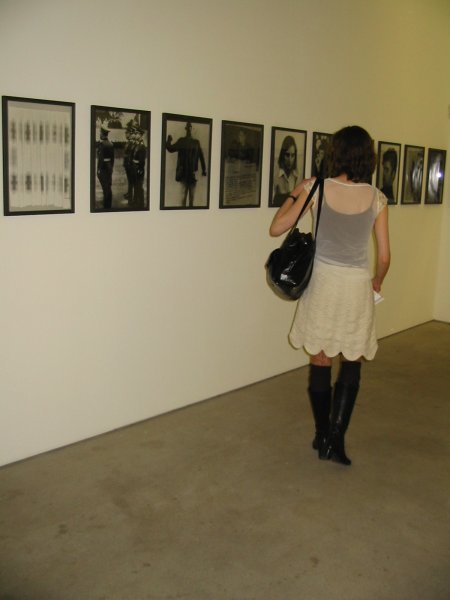
The above fotographs called “Einheit” (unity) (1991-1994) are by Michael Schmidt. They were aligned along the big central hall of the Kunstwerke. In the middle of this hall there were Thomas Schüttes “Capacity men” (2005) – three crow-like giant sculptures looking at Schmidts images.
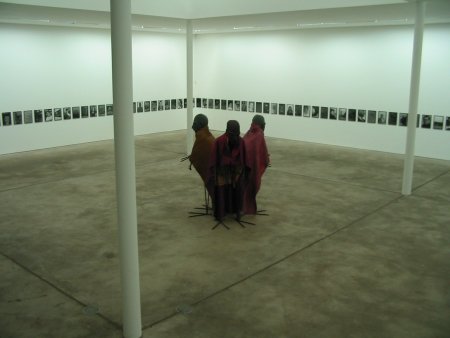 Creatures, life and death were important themes in the Biennale. Besides the
Creatures, life and death were important themes in the Biennale. Besides the
Mice-men (top most image) by Roberto Cuoghi (2004) there were e.g. Bruce Nauman’s video sculpture “Of rats and bats” (Learned Helplessness in Rats II)(1988) – a yellow-green maze-shaped plastic container and a video, showing the artist whacking on a sack with a baseball bat next to the yellow-green plastic container (just – in the video the yellow-green plastic container contained real living rats and I asked myself wether there were originally real rats also inside the exhibition yellow-green plastic container):
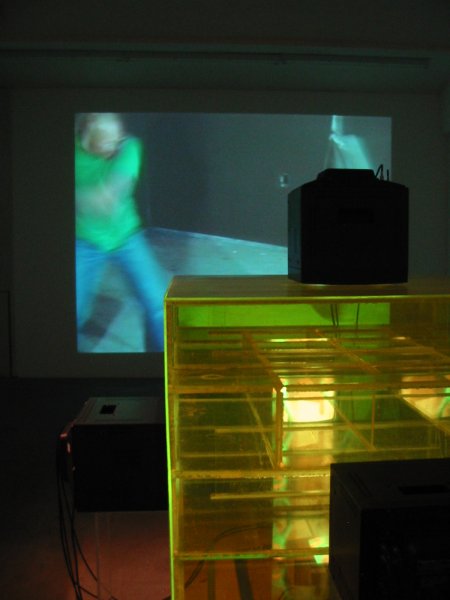
Real creatures were also shown in this video “Deeparture” (2005) by Mircea Cantor displaying a wolf and a deer trapped together in a white cube and humans in a white cube watching the video:
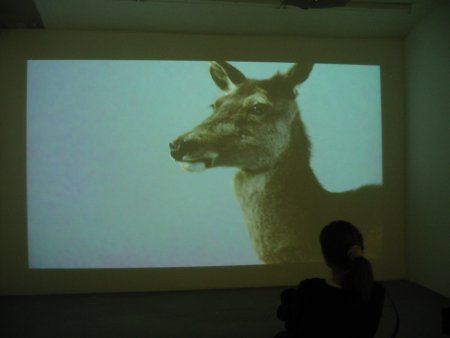
In a series of cold-coloured fotographs Corey McCorkle documented the birth of his son. The fotographs are called “Spiritual midwifery” (2005). Why he did chose this title?
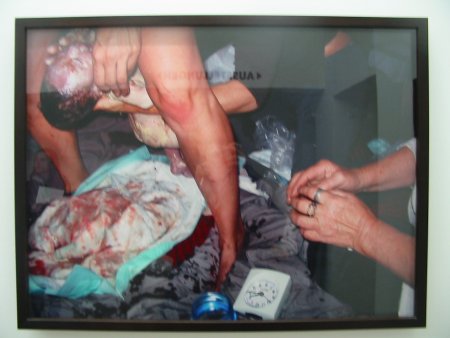
Reynold Reynolds “burn” (with Patrick Jolley) was a bit more poetic. It is a 35 mm film recast on DVD. The film displays people living in fire and snow. The people are acting as if the fire wouldn’t hurt them.
Also if the play with fire, snow and rotten houses was consciously exagerated – the film still reminded me of Tarkovsky’s Nostalghia.
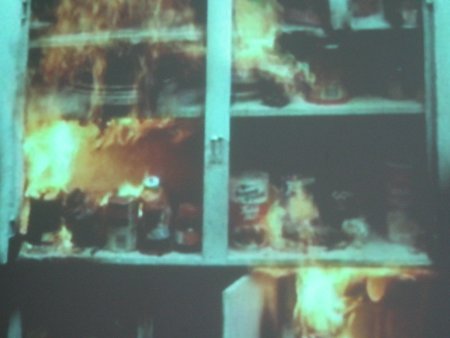
In contrast to these rather heavy loaded themes was the lively video “paralyzed” of Klara Liden (2003) . It made me think a bit of “parkour”.
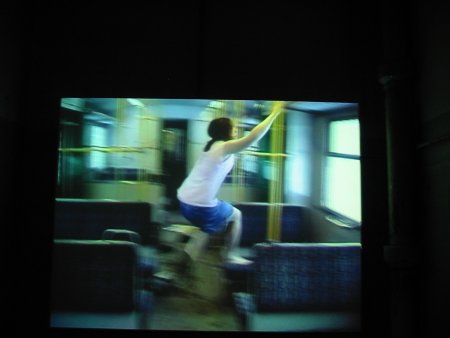
Another piece of reinterpreted architectural use was “Sondermodelle” of Oliver Croy with Oliver Elser’s display of the 387 houses which were built by austrian insurance clerk Peter Fritz:
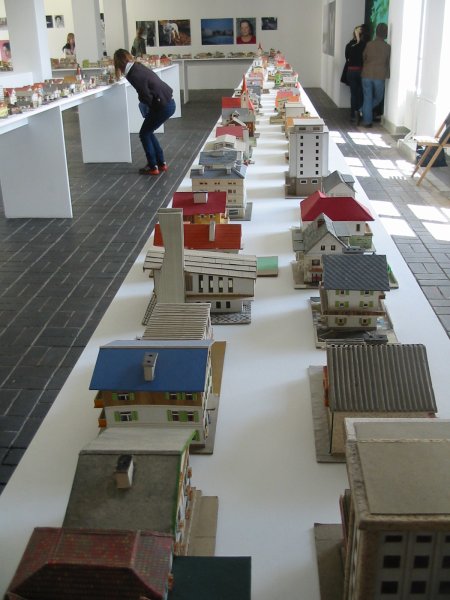
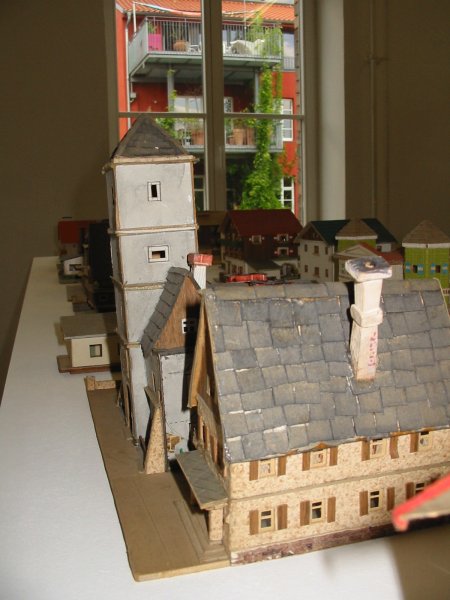
The entanglement of inside and ouside in this room not only given by the above juxtaposition, but also by thoughtful fotographs from Shirana Shahbazi which were hanging next to the Sondermodelle and which were displaying again scenes of Berlin-Mitte:
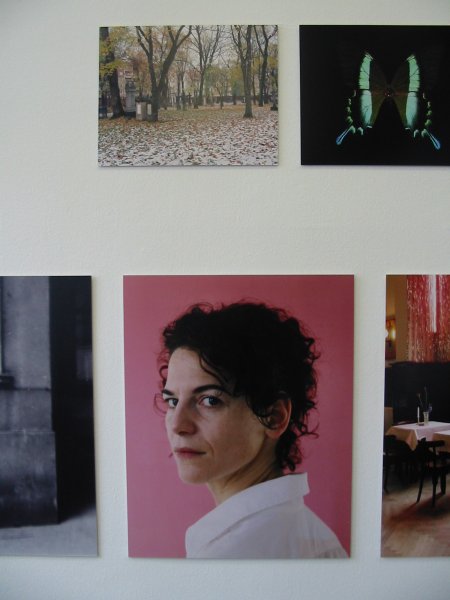
A traumatic experience was adressed in Ján Mančuška‘s 20 min after (2006) a conceptional 3D installation about a story from his mother. In this story she describes how she heard that her father has suffered a stroke and is dying. I would have never expected such a story behind a decorative, graphically elaborate set-up like this one. The letters were about 6cm big in shiny silver and hung on a steel cable in a height of about 2m30.
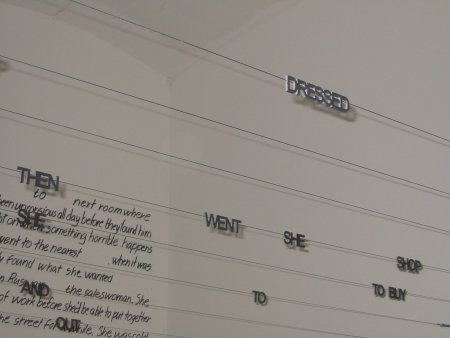
Next to it was an installation of Cathy Wilkes. The installation didn’t speak to me, but may be I was too occupied with observing the two fotographers trying to capture her artwork:
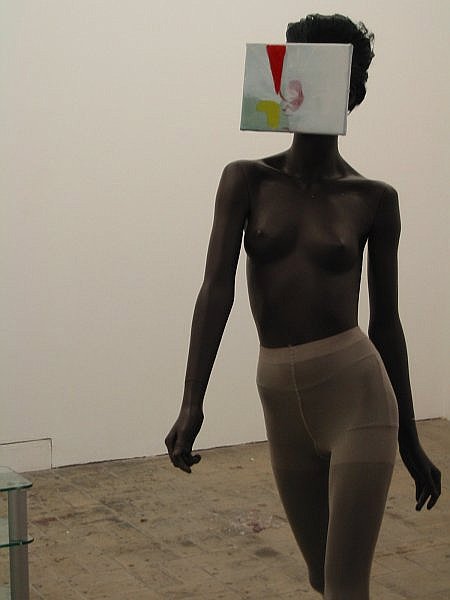
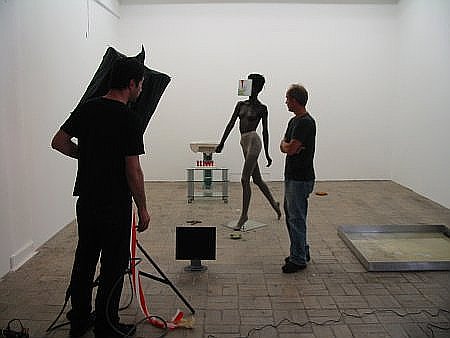
The last work I documented in the Kunstwerke was Gillian Wearings “drunk” (1999) – a video portrait of drunks that live rough around her studios in East London which she implemented into a laboratory-like setting:
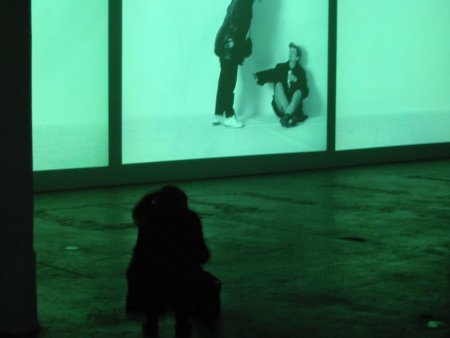
There was more artwork in the Kunstwerke, however I turn now to the
next venues.
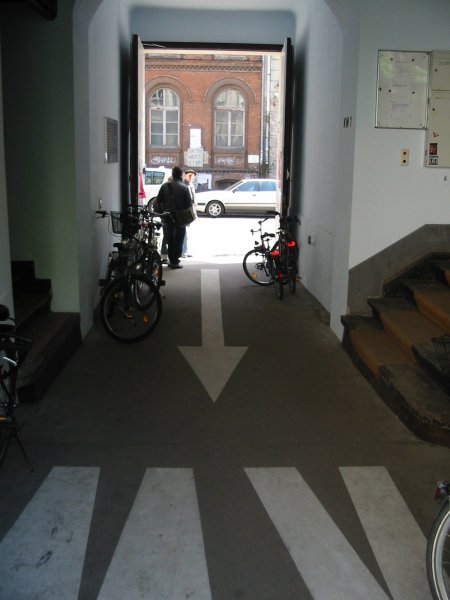
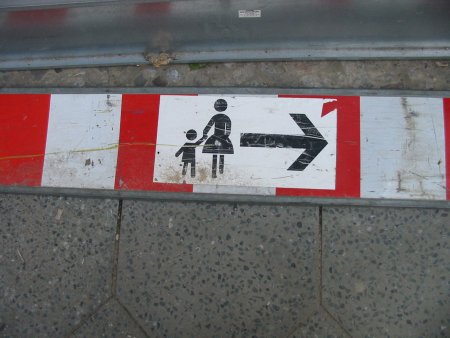
There was a container on Auguststrasse containing a little cinema, which showed a 17 min. video of a bike trip of Erik van Lieshout from Amsterdam to Berlin. Erik van Lieshout was carefully observing. The video displayed the german landscape unerringly in a bitter sarcastic and true manner.
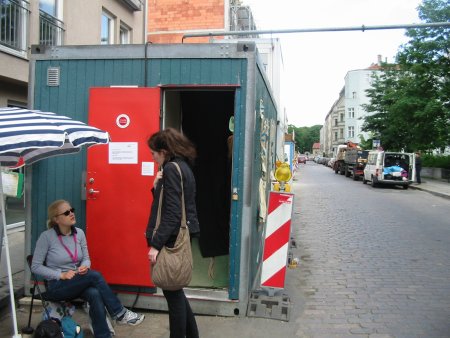
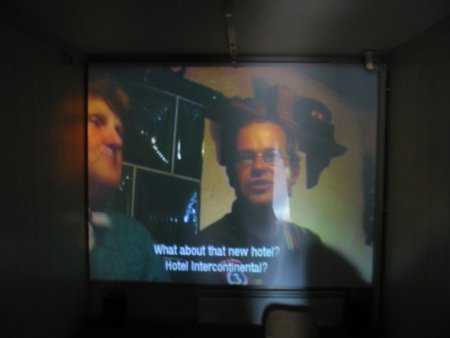
In Ballhaus Mitte (dance hall Mitte) there was a work of Tino Sehgal in which two actors were permanently kissing each other in the old beautiful (but ruinous) Spiegelsaal (mirror hall). It was forbidden to take fotographs there. Two other venues were private appartments. The first appartment was Auguststrasse 23. This appartment had no bedroom, as I was told the owner uses it only for gatherings. Among the precious furniture of the owner the appartment displayed the work “Reticencia al trabajo” (2006) by Damián Ortega which consisted of motorized furniture, which moves if one comes to close. However unfortuantely it didnt work when I was there. The appartment contained also a foto album of Aneta Grzeszykowska (“Album” 2005), where she cut herself out of her own family pictures:
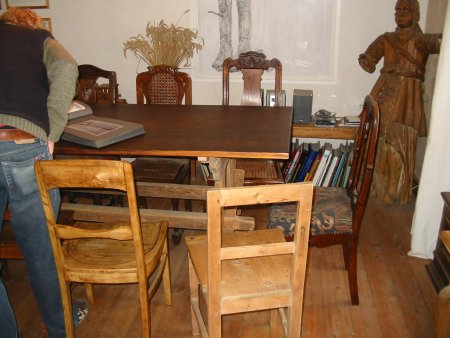
In between venues there was Auguststrasse again:
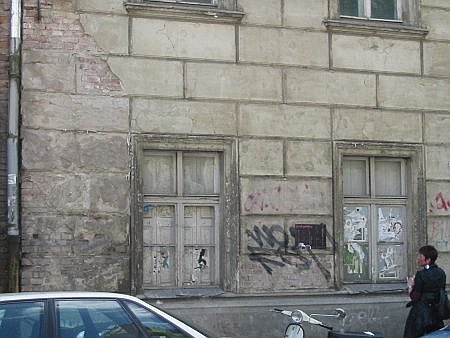
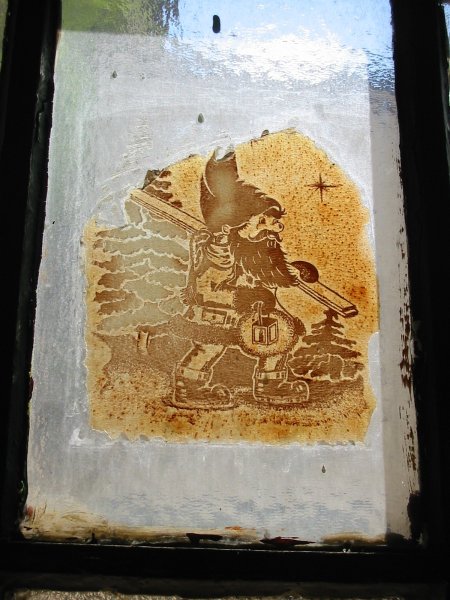
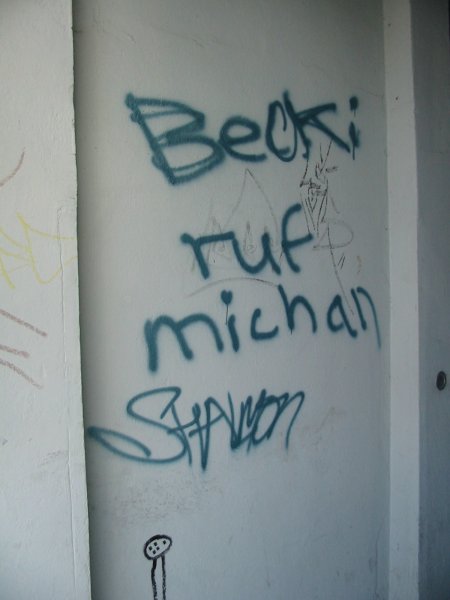
The other appartment was the appartment of artist Norbert Schwontkowski, apparently a rising star on the Berlin art heaven. However his appartment emanated an air of meekness, which was indeed bracing.
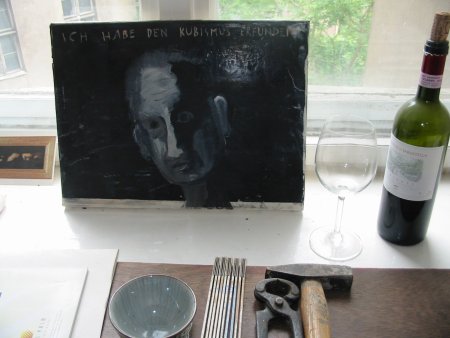
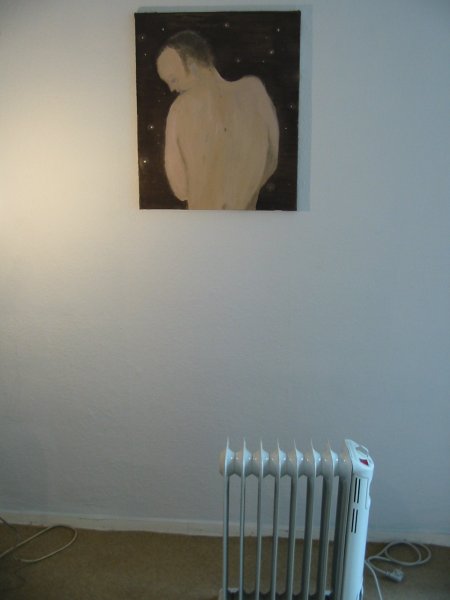
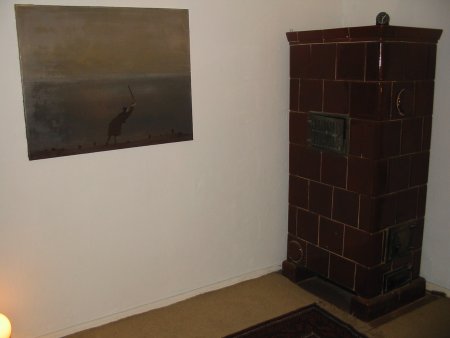
My next and last venue was the former jewish girl school. The girls school was closed in 1942 by the Nazi’s and reopened after the war again as a school. It was abandonned in the nineties and empty since then. There were still the old school paperwall and some announcements from 10 years ago on the walls. There was a security check at the entrance and it was forbidden to take pictures of the building itself and of some of the artwork. The unchanged condition of the house and the history of that house were haunting. It was hard to focus on the artworks.
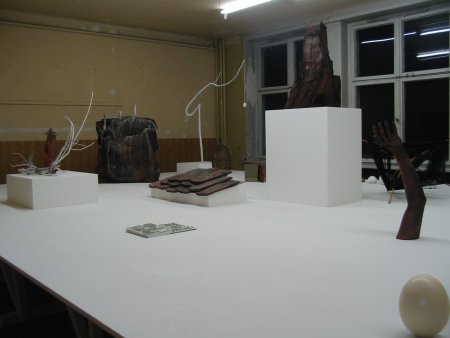
(Sebastian Hammwöhner / Dani Jakob / Gabriel Vormstein “cannot forward or rewind, this state of being, this aged resign – let the wind catch a rainbow on fire…,” (2004/2006))
There was old wall paper even behind Paloma Varga Weisz’s sculpture:
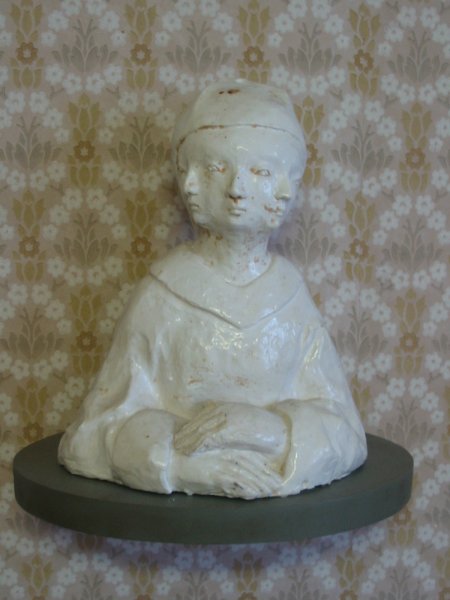
I was happy to find the video works of Thomas Bayrle but even these couldn’t be watched without a haunted feeling- i think:
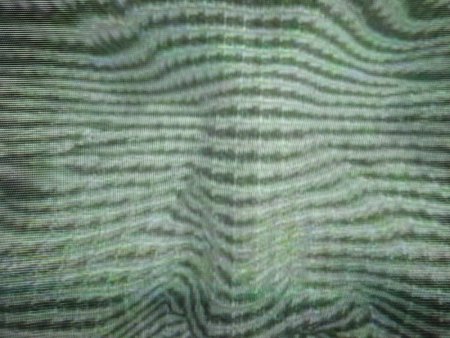 His video work “(b)alt” can be watched here at medienkunstnetz.
His video work “(b)alt” can be watched here at medienkunstnetz.
In Viktor Alimpiev 2.5 minutes Film “Zarnitzyi” (“summer lightnings” 2004) school girls are hammering with their fingers on their class desks in a school room which looked very much like the room where the video was shown. The hammering sounded a bit like a loud crackle. They all suddenly stopped and put their hands across their mouth as if it was forbidden to make these sounds. Then they started again and stopped again:
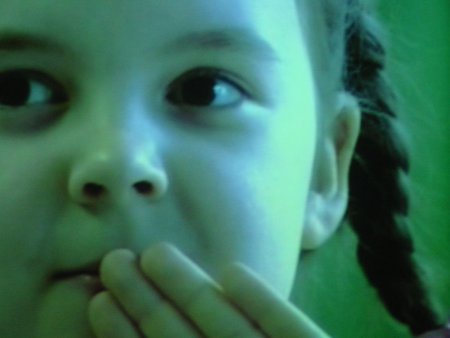
Seeing these girls in this house was too much for me. I went home.
November 27th, 2006 at 12:30 am
[…] Doron Golan of computerfinearts.com and dvblog.org had probably similar feelings when the whole online exhibition, which is here, went on display there (via a video projector at the digital arts museum in Berlin, Tucholskystr). I promised him to go to the opening on Nov. 9. […]
February 6th, 2007 at 12:26 pm
[…] Mice and men share about 90% of the genome. Therefore we are confident that one can safely assume to search one’s own brain when browsing the Allen Brain Atlas. […]